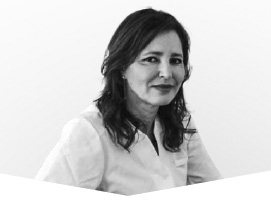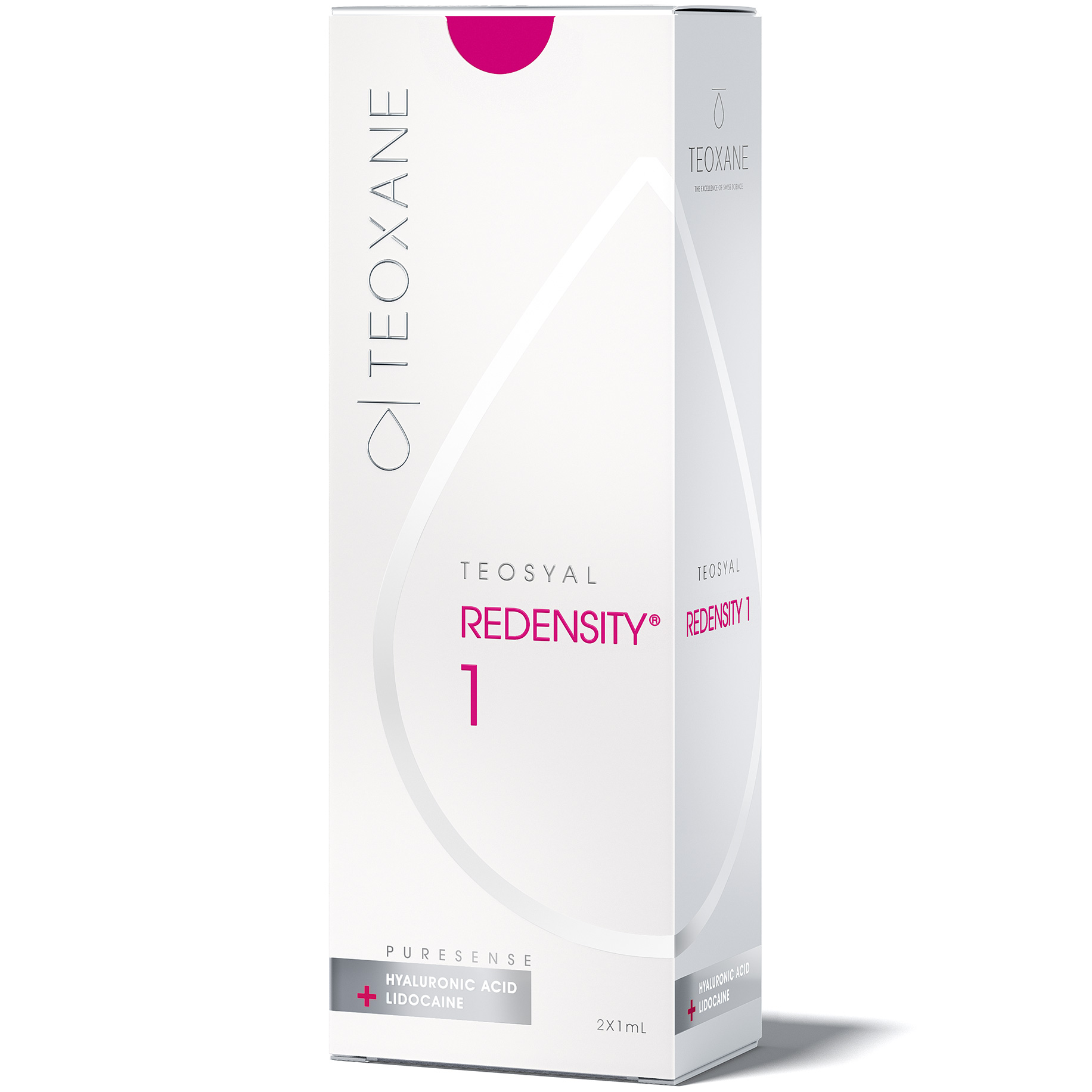Dr Dahbia Touhlali
The eye area is the first area we need to analyse, as our emotions flow from our eyes even before we speak. This is our eyes’ “body language”.
The periorbital area groups together several structures, each one playing an important role in the expression and requiring a specific treatment. The eye area not only suffers the effects of aging, but also stress, a lack of sleep, diet, sun, hyper-pigmentation, microcirculation and genetics.
Why does our eye area change?
Aging alters the eye area because the muscle forces become inverted, with hypotonia of the lifting muscles and hypertonia of the lowering muscles causing the tail of the eyebrow to droop and crows’ feet wrinkles, glabellar lines and under-eye wrinkles to appear, and the outer corner of the eye to drop. A loss of fat, as well as its migration downwards, leads to hollowing in the temples, the collapse of the upper eyelid, the appearance of under-eye hollows, tear troughs, palpebral-malar hollows and a loss of volume in the cheekbones. In younger patients, we might see a hollow under-eye area with a palpebrojugal groove and a tear trough or even hyperpigmentation.
My “Eye Lift” method
Having been interested in this unique area for many years now, I have developed a method called the “Eye Lift”. It allows us to rejuvenate the periorbital area in four separate sections, using a combination of mildly invasive treatments:
Zone 1: The outer third of the eyebrow, the tail of the eyebrow and the temporal fossa
Zone 2: The crow’s feet wrinkles, the cheekbones and the malar section of the tear trough
Zone 3: Where the under-eye hollow meets the lower eye socket, the palpebromalar groove and the tear trough (around the eye)
Zone 4: The glabellar and forehead lines
My protocol
1. TO LIFT THE EXPRESSION:
I use a sufficiently dense, volumising Hyaluronic Acid (HA), such as Voluma from Allergan laboratories or Stylage XL from Vivacy laboratories, to treat the temple up to the frontotemporal ridge: the outer corner of the eyebrow is automatically lifted. I perform a second injection using a cannula into the Charpy fat pad, above the eyebrow, to plump up its outer third and, at the same time, lift the upper eyelid.
2. TO PROVIDE IN-DEPTH SUPPORT
I make “lifting” points with a needle into the zygomatic arch to lift the cheekbone, and complement these injections with a point underneath the ENT ligament which lifts the outer corner of the eye. This rejuvenates the expression and makes the eyes look less tired. I use a dense and homogenous hyaluronic acid for this region, such as Voluma or Intense from Mesoestetic, which provides a natural-looking projection.
Still using the same hyaluronic acid, but this time injected with a cannula, I treat the rest of the cheek and tear trough to provide better support for the under-eye area.
3. TO FILL THE UNDER-EYE HOLLOW
 This includes the lower edge of the eye socket, the under-eye hollow (an inverted, concave triangle), the start of the tear trough and the palpebromalar or nasojugal fold, which goes from the inner corner of the eye towards the inside of the cheek. In this delicate area, I opt for a fairly reticulated hyaluronic acid, but one which is not very hydrophilic, like Restylane from Galderma laboratories or Volbella from Allergan, so as not to create any swelling in this at-risk area. I inject using a cannula, deep into the tissue, in contact with the bone, depositing well spaced-out, small quantities of product so as not to create an unsightly chain effect. Belotero Balance from Merz Aesthetic laboratories can be used on the crow’s feet. It is very malleable and is perfectly absorbed by the dermis.
This includes the lower edge of the eye socket, the under-eye hollow (an inverted, concave triangle), the start of the tear trough and the palpebromalar or nasojugal fold, which goes from the inner corner of the eye towards the inside of the cheek. In this delicate area, I opt for a fairly reticulated hyaluronic acid, but one which is not very hydrophilic, like Restylane from Galderma laboratories or Volbella from Allergan, so as not to create any swelling in this at-risk area. I inject using a cannula, deep into the tissue, in contact with the bone, depositing well spaced-out, small quantities of product so as not to create an unsightly chain effect. Belotero Balance from Merz Aesthetic laboratories can be used on the crow’s feet. It is very malleable and is perfectly absorbed by the dermis.
4. FOR THE CENTRAL REGION AND INNER EYEBROW
Without blocking the forehead’s muscle activity, which can weigh down the eyelids and cause the eyebrows to droop, I perform the blanching technique: superficial hyaluronic acid injections. I use Belotero Balance from Merz laboratories, which can be injected very superficially and can correct any creases in the epidermis by stimulating collagen production. The forehead is slightly plumped, which makes the expression look more alive.
What about hyperpigmentation under the eyes?
Since hyaluronic acid injections can affect the skin’s quality and colour, I recommend them on a case per case basis to complete the treatment by treating brown hyperpigmentation caused by melanin deposits and blueish-purple vascular colouration in the under-eye area due to bad microcirculation.
I combine various treatments to optimise the results:
- In a brown hyperpigmented under-eye area, I perform a depigmenting peel. Easy TCA from SkinTech laboratories, PRX T 33 from Novelskin or Melanostop from Mesoestetic are all suitable for this area.
- I complete this with a very superficial injection of Xelarederm (Hyalual) which allows us to combine a non-cross-linked hyaluronic acid with a highly innovative succinic acid to treat skin discolouration and quality. Given that a so-called vascular under-eye area is linked to defective microcirculation and significant thinning of the skin, leaving the vessels and muscles visible, collagen-stimulating fractional lasers or microcirculation-boosting carboxytherapy both give good results.
It’s also about fighting aging!
Though local, medical aesthetic corrections can give great patient satisfaction, if we are to achieve long-lasting results, we must adopt a “Pro-Aging” approach. Good-quality sleep – both in terms of duration and structure, by respecting the number of sleep cycles and the different “light, deep and REM” phases – allows our body to restore and repair its tissues, as well as secrete numerous neurotransmitters and vital hormones for fighting premature aging and oxidative stress.
Melatonin supplements, light therapy and relevant sleep hygiene advice can help reset your sleep pattern. After a personalised assessment, they can be complemented with vitamin or hormone supplements to correct any deficiencies, namely during the menopause (DHEA, testosterone, oestrogen and progesterone). The EYE LIFT method is a comprehensive and structured approach for treating the eye area, which blends aesthetic and anti-aging medicine.
 Dr Dahbia Touhlali: An aesthetic doctor with an inter-university degree in Morphological and Anti-Aging Medicine and an interuniversity degree in Sleep, Dr Dahbia Touhlali works in Nice and provides comprehensive, progressive and personalised treatment. A graduate of Aix-Marseille medical faculty in 2001, she is passionate about aesthetic medicine, as the way we perceive ourselves directly affects our morale and our health. She is an expert at a number of international congresses and acts as a consultant for various laboratories. She also works in the United Arab Emirates and Russia.
Dr Dahbia Touhlali: An aesthetic doctor with an inter-university degree in Morphological and Anti-Aging Medicine and an interuniversity degree in Sleep, Dr Dahbia Touhlali works in Nice and provides comprehensive, progressive and personalised treatment. A graduate of Aix-Marseille medical faculty in 2001, she is passionate about aesthetic medicine, as the way we perceive ourselves directly affects our morale and our health. She is an expert at a number of international congresses and acts as a consultant for various laboratories. She also works in the United Arab Emirates and Russia.












